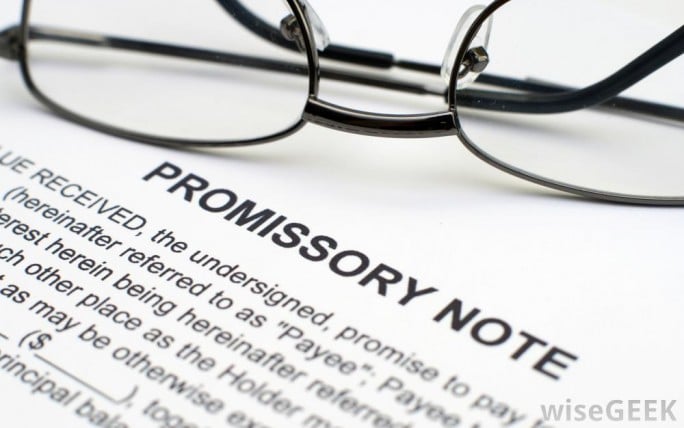In the dynamic landscape of financial transactions, a Promissory Note in Florida emerges as a pivotal instrument facilitating the lending and borrowing of money between parties. This versatile legal document finds application in a myriad of scenarios, both personal and business-oriented, solidifying its status as a fundamental component of financial agreements. To navigate the intricacies of this instrument, it becomes essential to delve into the diverse realms of Florida promissory notes, encompassing both secured and unsecured variants.

The distinction between secured and unsecured promissory notes in Florida lies in the collateral associated with the transaction. A secured promissory note involves the inclusion of collateral, providing an added layer of security for the lender. In contrast, an unsecured promissory note lacks such collateral, relying solely on the borrower’s commitment and creditworthiness.
Understanding the requirements associated with crafting a Florida promissory note is paramount for individuals and businesses alike. These requirements encompass essential elements such as the names and addresses of both parties involved, the principal amount of the loan, the agreed-upon interest rate, repayment terms, and any stipulations regarding default or late payments. Adhering to these requisites ensures the legal validity and enforceability of the promissory note, safeguarding the interests of both the lender and the borrower.
To streamline the process of drafting a Florida promissory note, a template serves as a valuable resource. This template encapsulates the crucial components, providing a structured framework that aligns with the legal nuances of such financial agreements. Utilizing a template not only expedites the documentation process but also instills confidence in both parties by fostering clarity and transparency.
In essence, exploring the realm of promissory notes in Florida unravels a tapestry of financial instruments that cater to the diverse needs of borrowers and lenders. Whether secured or unsecured, these notes epitomize the essence of contractual agreements, shaping the landscape of financial transactions within the vibrant and dynamic state of Florida.
The Purpose of Promissory Notes in Florida Law
In the multifaceted realm of financial transactions, a Florida promissory note stands as a cornerstone, designed with the overarching objective of forging a legally binding and enforceable financial instrument. This instrument intricately outlines the fundamental terms and conditions integral to a loan agreement, delineating the obligations and commitments of both the borrower and the lender. Aptly named, a promissory note derives its essence from the solemn “promise” undertaken by the borrower to repay the specified monetary amount to the lender within the stipulated framework.
Within the framework of a Florida promissory note, meticulous attention is accorded to articulating the intricate details that underpin the financial arrangement. These details encompass, but are not limited to, the principal amount of the loan, the agreed-upon interest rate governing the repayment, the delineation of the repayment schedule, and any auxiliary stipulations pertaining to late payments or potential default scenarios. By encapsulating these pivotal elements, the promissory note not only establishes a comprehensive roadmap for the financial transaction but also serves as a safeguard for both parties involved.
The inherent legal significance of a Florida promissory note is underscored by its role in creating a tangible and enforceable record of the financial undertaking. This document stands as a testament to the commitment and accountability assumed by the borrower, adding a layer of security and assurance for the lender. Moreover, the clarity afforded by a well-crafted promissory note ensures that potential disputes or ambiguities are mitigated, fostering a transparent and mutually beneficial financial relationship.
In essence, a Florida promissory note emerges as a vital tool within the financial landscape, embodying the spirit of trust, commitment, and legal precision. Its purpose extends beyond the mere documentation of a loan; it serves as a catalyst for fostering financial integrity and accountability within the intricate tapestry of lending and borrowing transactions in the dynamic state of Florida.
Secured vs Unsecured Promissory Note, What’s the Difference?
In the intricate landscape of financial agreements, a Florida promissory note unfurls into two distinctive iterations: secured and unsecured. Within this dichotomy, a secured promissory note stands as a fortified pact, buttressed by collateral that could encompass a spectrum ranging from real estate and business interests to intellectual property or other personal assets owned by the borrower. On the contrary, the unsecured promissory note stands unadorned, devoid of collateral.
The crux of differentiation between these two facets lies in the concept of collateral, often referred to as a security interest. In the realm of secured promissory notes, the lender is endowed with a safety net in the form of collateral. This collateral serves as a tangible recourse in the unfortunate event of defaults. Should the borrower falter in meeting the repayment obligations, the lender possesses the prerogative to either retain or liquidate the underlying property, utilizing the proceeds to recoup potential losses incurred due to the default.
Conversely, an unsecured promissory note unfolds without the embellishment of collateral. In this scenario, the lender, bereft of any security interest, relies on the borrower’s commitment and financial standing as the bedrock of trust. In the event of a default, the recourse for the lender involves navigating the legal terrain to obtain a court judgment, as there are no inherent property interests to leverage.
The strategic choice between employing a secured or unsecured promissory note reverberates as a pivotal business decision. This choice is often intricately woven into the dynamics of the relationship between the borrower and lender, as well as the quantum of the note. In numerous instances, opting for a secured promissory note garnished with collateral proves to be a judicious course of action. The collateral not only serves as a deterrent but also affords the lender a robust mechanism to mitigate losses stemming from borrower defaults, be it due to late payments or other breaches of the contractual agreement.
In navigating the labyrinth of financial transactions, the decision to embrace the security of collateral or tread the path of an unsecured pact hinges on a delicate balance of risk mitigation and mutual trust. It is within this nuanced realm that the contours of a Florida promissory note evolve, reflecting the intricacies of financial prudence and the symbiotic relationship between borrower and lender.
Different Types of Promissory Note & When to Use Them
Within the realm of borrowing money, the contours of a promissory note take shape in various types, each delineated by the nuanced context of the loan agreement. A pivotal factor in defining this context revolves around the purpose behind the loan and the borrower’s intended utilization of the funds. This purpose typically falls into one of two broad categories: personal or commercial.
In the sphere of personal loans, the promissory note assumes a distinct character. These loans often cater to individual needs, spanning a spectrum from educational expenses, healthcare costs, and home renovations to unforeseen emergencies or debt consolidation endeavors. The personal promissory note encapsulates the borrower’s commitment to repay the borrowed amount within specified terms, weaving a financial narrative that reflects the intricacies of personal aspirations and responsibilities.
On the flip side, commercial loans unfurl a distinct tapestry within the realm of promissory notes. Tailored to address the financial exigencies of businesses, these notes cater to a myriad of needs such as operational expenses, expansion initiatives, or strategic investments. The commercial promissory note, a testament to the symbiotic dance between lenders and enterprises, delineates the terms under which funds are extended and repayment is orchestrated. It encapsulates not just financial transactions but also embodies the ambitions, strategies, and fiscal prudence of the commercial landscape.
In the dance of borrowing and lending, the promissory note emerges as a key player, adapting its form to the ever-shifting dynamics of personal and commercial financial narratives. Whether etched to address individual aspirations or to fuel the growth trajectories of businesses, the promissory note stands as a testament to the trust woven between borrowers and lenders, encapsulating financial commitments and aspirations within its legal contours.







